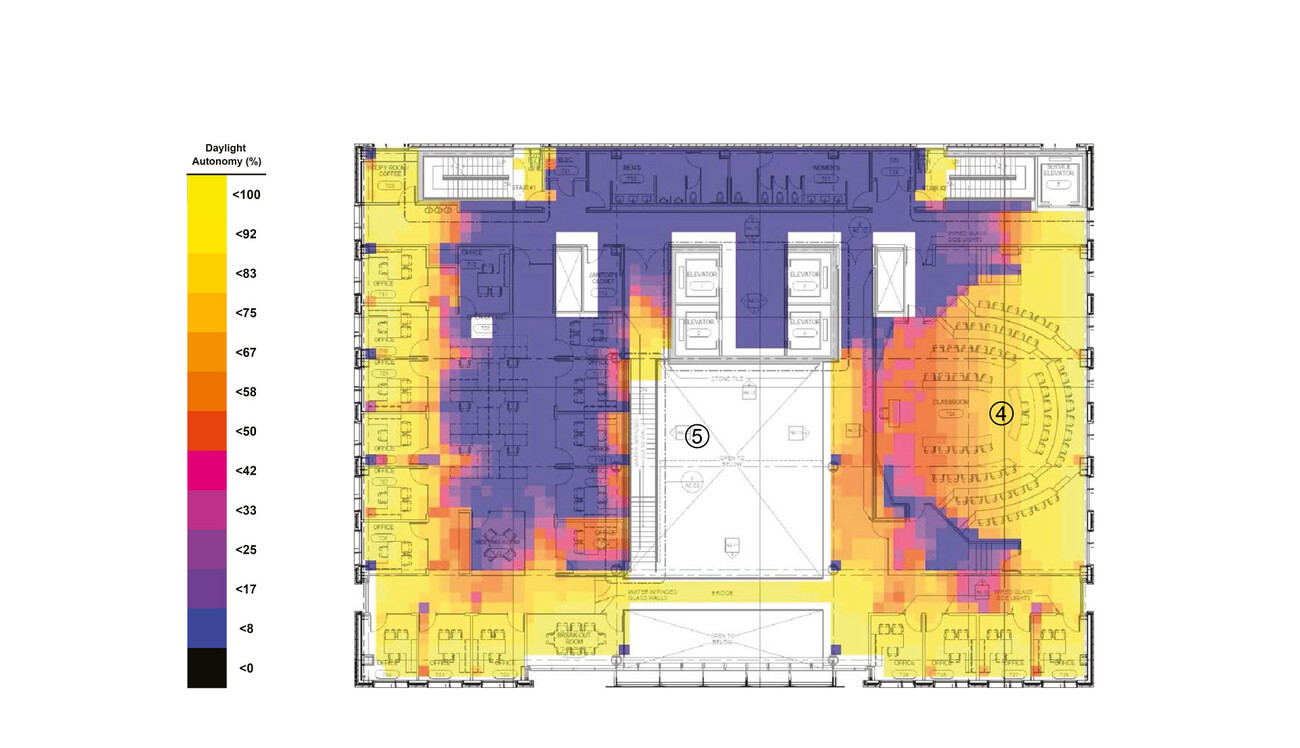John and Kathy Schreiber Center at Loyola Quinlan School of Business, Chicago, IL, USA

The John and Kathy Schreiber Center, the new 12-story building for the Quinlan School of Business, at Loyola’s downtown Water Tower Campus houses faculty and administrative offices, classrooms, and multifunction event spaces. A prominent ‘social stair’ provides a venue for whole-school gatherings, while a central atrium with integrated social spaces allows for continuous mingling and break-out work. The advanced social and sustainability goals place a capstone on Loyola’s 5-year series of projects with Transsolar and SCB, implementing technologies and lessons learned from five previous projects.
The overall climate concept relies on a central ‘slot atrium’ with south-facing glazing as the primary daylight source for atrium-adjacent spaces, and exhaust at the atrium top pulling natural ventilation through the entire building. Movable shading integrated in the atrium double façade prevents overheating of the atrium, while the double façade acts as a sealed, insulating layer in the winter. Fixed shading, with a position tuned to daylight requirements, controls heat gain in offices and classrooms. Mechanical systems supplemental to the passive design deliver minimum ventilation air and use low-energy radiant and chilled beam systems. Transsolar developed an architecturally integrated natural cross-ventilation strategy for the classrooms, offices, and the atrium by connecting the air path from façade openings to the atrium exhaust, enabling natural ventilation for 25% of the year. Transsolar also analyzed and optimized the performance of the architectural and mechanical systems using daylight and advanced thermal simulations, advising on and coordinating features such as double glazing with double low-e coating, automated window and shade controls, skylight shading and exhaust openings, and justification of dayligt dimming, and air handling unit configuration.
Overall site energy consumption is predicted at 28 kBtu/sf/yr, a 61% reduction over the ASHRAE 90.1-2007 baseline. The project is on target for LEED NC-2009 Silver certification.






